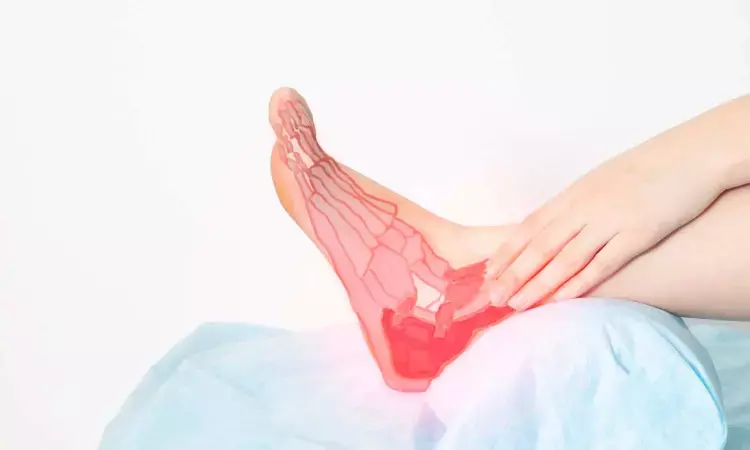- Home
- Medical news & Guidelines
- Anesthesiology
- Cardiology and CTVS
- Critical Care
- Dentistry
- Dermatology
- Diabetes and Endocrinology
- ENT
- Gastroenterology
- Medicine
- Nephrology
- Neurology
- Obstretics-Gynaecology
- Oncology
- Ophthalmology
- Orthopaedics
- Pediatrics-Neonatology
- Psychiatry
- Pulmonology
- Radiology
- Surgery
- Urology
- Laboratory Medicine
- Diet
- Nursing
- Paramedical
- Physiotherapy
- Health news
- Fact Check
- Bone Health Fact Check
- Brain Health Fact Check
- Cancer Related Fact Check
- Child Care Fact Check
- Dental and oral health fact check
- Diabetes and metabolic health fact check
- Diet and Nutrition Fact Check
- Eye and ENT Care Fact Check
- Fitness fact check
- Gut health fact check
- Heart health fact check
- Kidney health fact check
- Medical education fact check
- Men's health fact check
- Respiratory fact check
- Skin and hair care fact check
- Vaccine and Immunization fact check
- Women's health fact check
- AYUSH
- State News
- Andaman and Nicobar Islands
- Andhra Pradesh
- Arunachal Pradesh
- Assam
- Bihar
- Chandigarh
- Chattisgarh
- Dadra and Nagar Haveli
- Daman and Diu
- Delhi
- Goa
- Gujarat
- Haryana
- Himachal Pradesh
- Jammu & Kashmir
- Jharkhand
- Karnataka
- Kerala
- Ladakh
- Lakshadweep
- Madhya Pradesh
- Maharashtra
- Manipur
- Meghalaya
- Mizoram
- Nagaland
- Odisha
- Puducherry
- Punjab
- Rajasthan
- Sikkim
- Tamil Nadu
- Telangana
- Tripura
- Uttar Pradesh
- Uttrakhand
- West Bengal
- Medical Education
- Industry
Maisonneuve fracture treated with novel suture-button system stabilization combined with plate and arthroscopic assistance

Maisonneuve fractures, named after Jules Germain Francois Maisonneuve, were first described in 1840.These fractures account for approximately 5% of all ankle traumas requiring surgical intervention. Diagnosis is made through radiographic imaging and clinical evaluation, including specific tests such as the Cotton test, pronation-external rotation test, squeeze test, and crossed-leg test.
Puddu et al conducted a study to evaluate the short-to medium-term clinical and radiological outcomes of patients with Maisonneuve fractures treated with a suture-button system stabilization combined with plate and arthroscopic assistance (SBPAA).
The study included 13 patients treated from January 2018 to June2022. Specific radiographical follow-up and periodic checks were performed in a short -to-medium term period, to evaluate syndesmosis evolution and tibiofibular overlap with medial clear space (MCS). In addition, fracture Angle, shortening, and displacement were evaluated.
The surgical technique consists of two stages: an open one and a subsequent arthroscopic. A 4-hole 1/3 tubular plate is selected and positioned according to the biometric criteria for syndesmosis stabilization with a posteroanterior inclination of 20◦ and an application proximal to the tibiotarsal joint. Subsequently stabilization via two “button and suture” traction is performed.
For arthroscopic surgery two different accesses are made in anteromedial and anterolateral region in order to diagnose visible injuries and evaluate the degree of syndesmosis’s instability .The two-traction system are tensioned under arthroscopic guidance to evaluate the correct tibiofibular alignment and restore the overlap sign. Once the syndesmosis has been stabilized, the deltoid ligament can be arthroscopically reinserted using anchors or treated with mini-open suturing.
Key findings of the study were:
• The study included 13 patients, 9 males and 4 females, treated at our surgical department between January 2018 and June 2022.
• Patients were aged between 35 and 63 years old.
• Mean AOFAS score showed significant increase from 86.7 ± 5.2 s dev at 6 months to 94.2 ± 3.3 at 12 months.
• Progressive recovery and improvement were observed during follow-up from both radiographic and clinical perspective.
• Data showed that patients were able to return to full weight-bearing walking around the 9th week and to sport activities in 7.5 months.
• Long-term complications associated with residual joint stiffness, complex regional pain syndrome, or wound complications were observed in three patients.
The authors concluded that - “Intraoperative arthroscopy represent a valid diagnostic tool to better recognize and evaluate osteochondral lesions in case of syndesmosys. The study demonstrates the importance of intraoperative arthroscopy for recognizing and treating associated osteochondral lesions with proper syndesmosis evaluation. Plate associated to double TightRope represent valid solution to functionally fix and reduce fractures. Additionally, it imitates the normal syndesmosis’s anatomy and provides elasticity and robustness, guaranteeing a rapid return to sporting activity. Data and casuistry support these findings.”
Further reading:
Maisonneuve fracture treated with suture-button system stabilization combined with plate and arthroscopic assistance (SBPAA): Clinical and radiological evaluation in short-medium period L. Puddu , F. Cortese et al Journal of Orthopaedics 46 (2023) 12–17, https://doi.org/10.1016/j.jor.2023.10.007
MBBS, Dip. Ortho, DNB ortho, MNAMS
Dr Supreeth D R (MBBS, Dip. Ortho, DNB ortho, MNAMS) is a practicing orthopedician with interest in medical research and publishing articles. He completed MBBS from mysore medical college, dip ortho from Trivandrum medical college and sec. DNB from Manipal Hospital, Bengaluru. He has expirence of 7years in the field of orthopedics. He has presented scientific papers & posters in various state, national and international conferences. His interest in writing articles lead the way to join medical dialogues. He can be contacted at editorial@medicaldialogues.in.
Dr Kamal Kant Kohli-MBBS, DTCD- a chest specialist with more than 30 years of practice and a flair for writing clinical articles, Dr Kamal Kant Kohli joined Medical Dialogues as a Chief Editor of Medical News. Besides writing articles, as an editor, he proofreads and verifies all the medical content published on Medical Dialogues including those coming from journals, studies,medical conferences,guidelines etc. Email: drkohli@medicaldialogues.in. Contact no. 011-43720751


